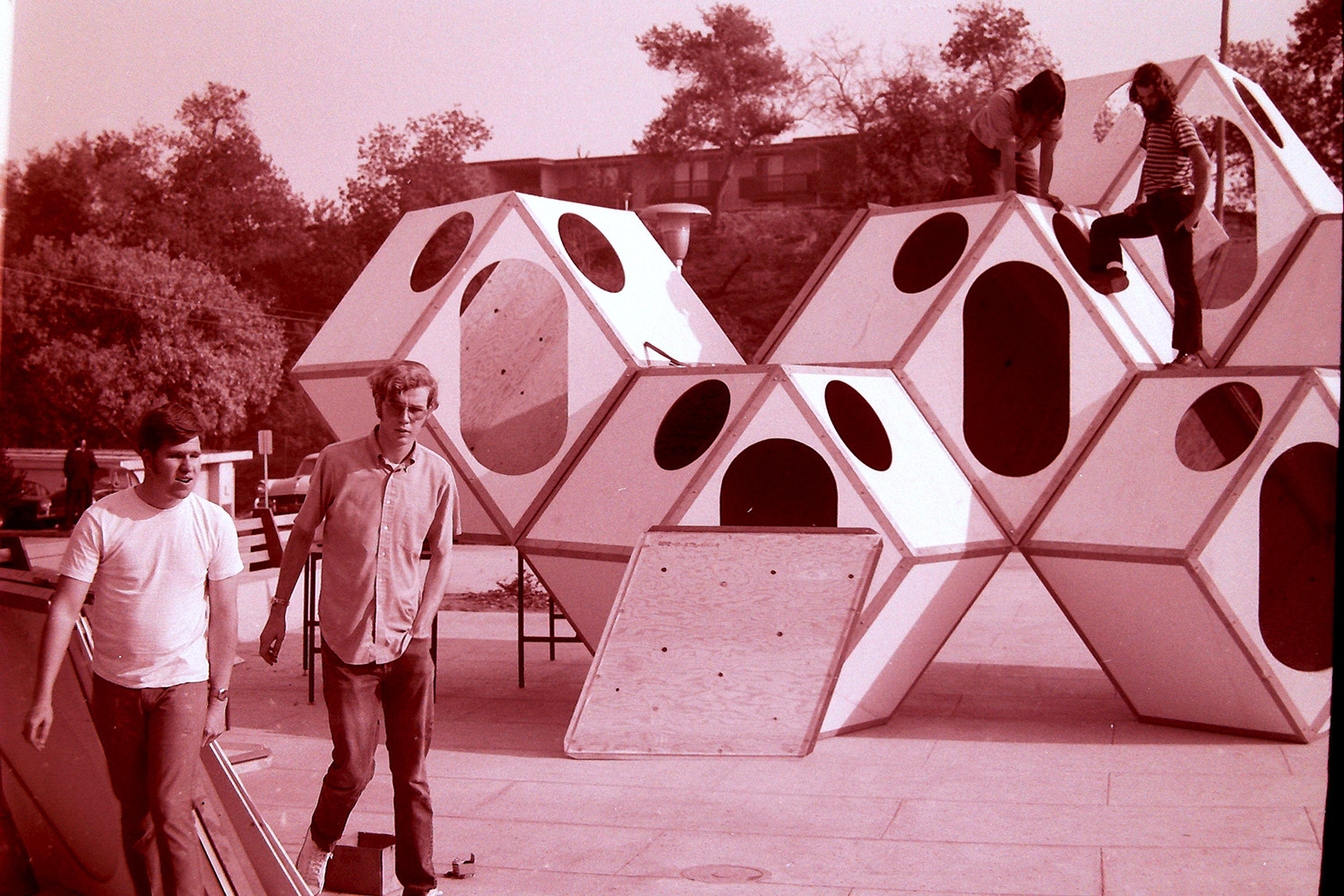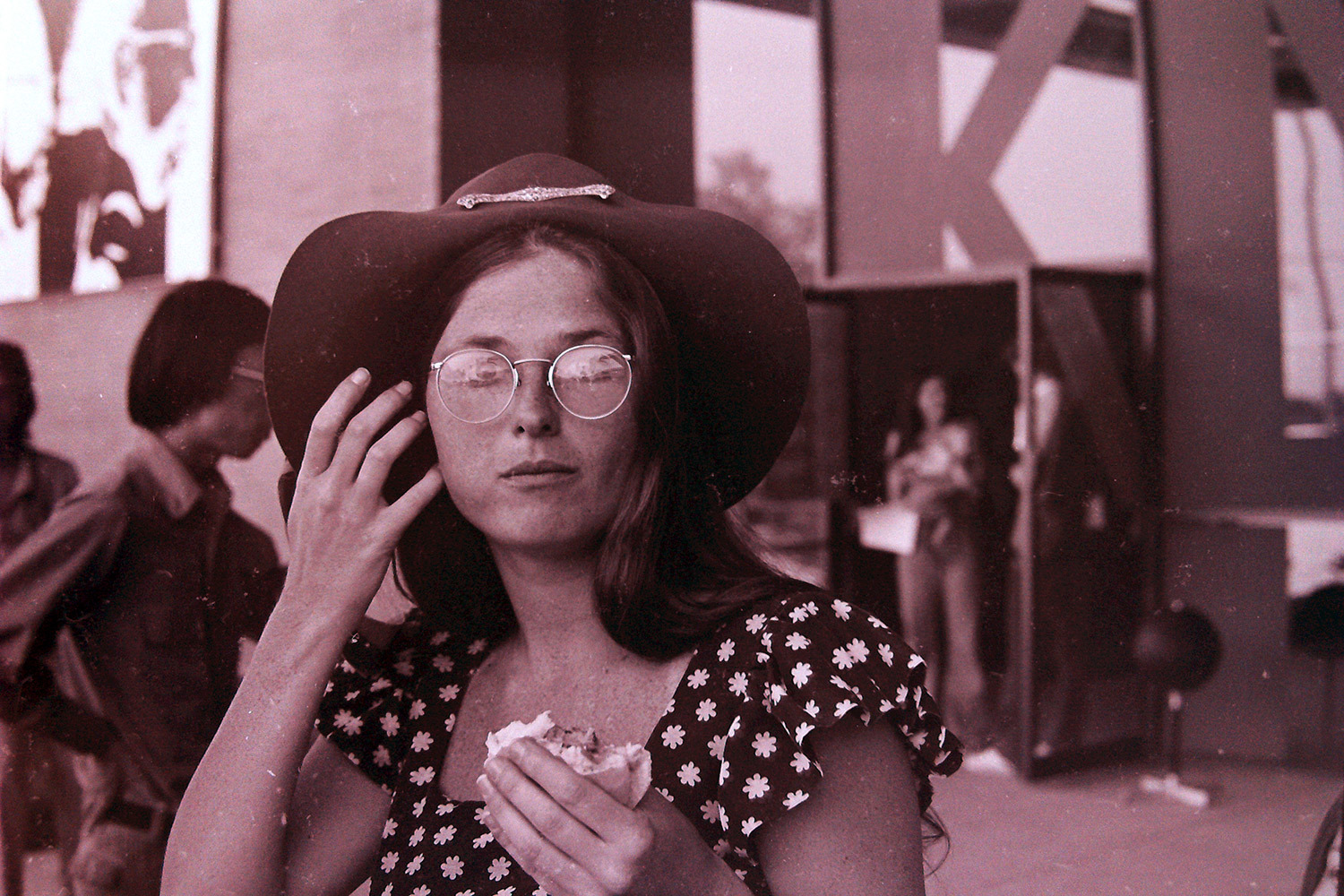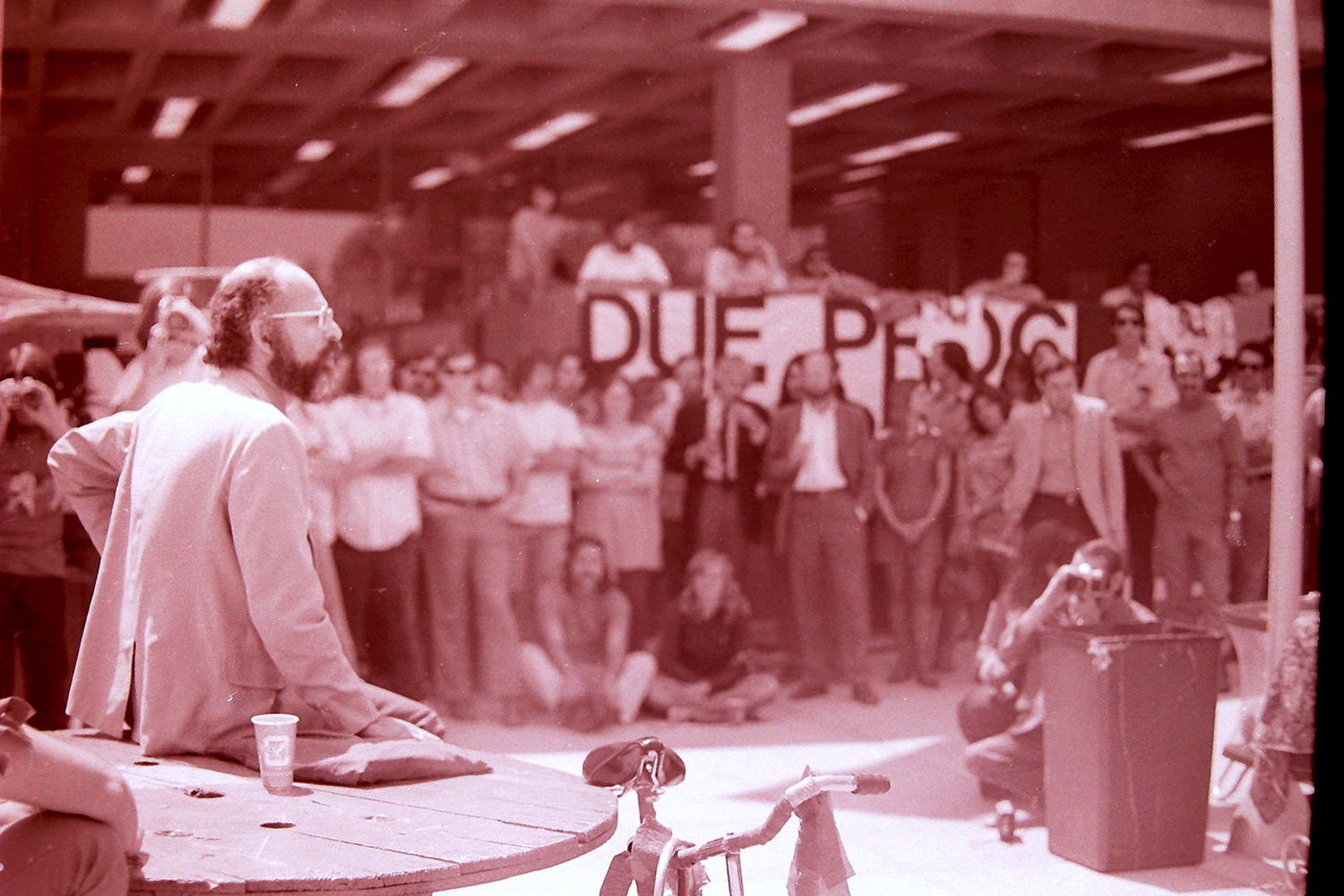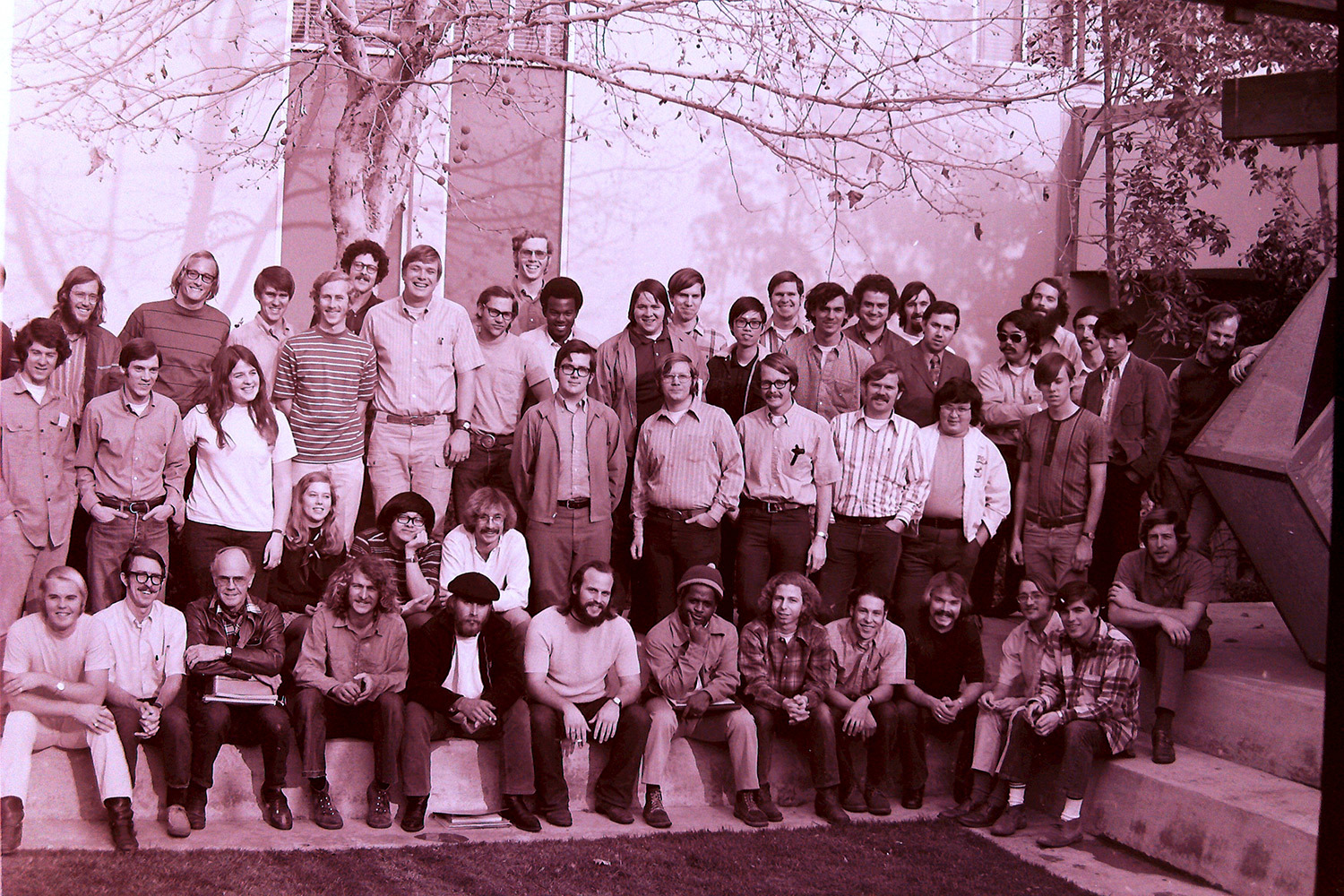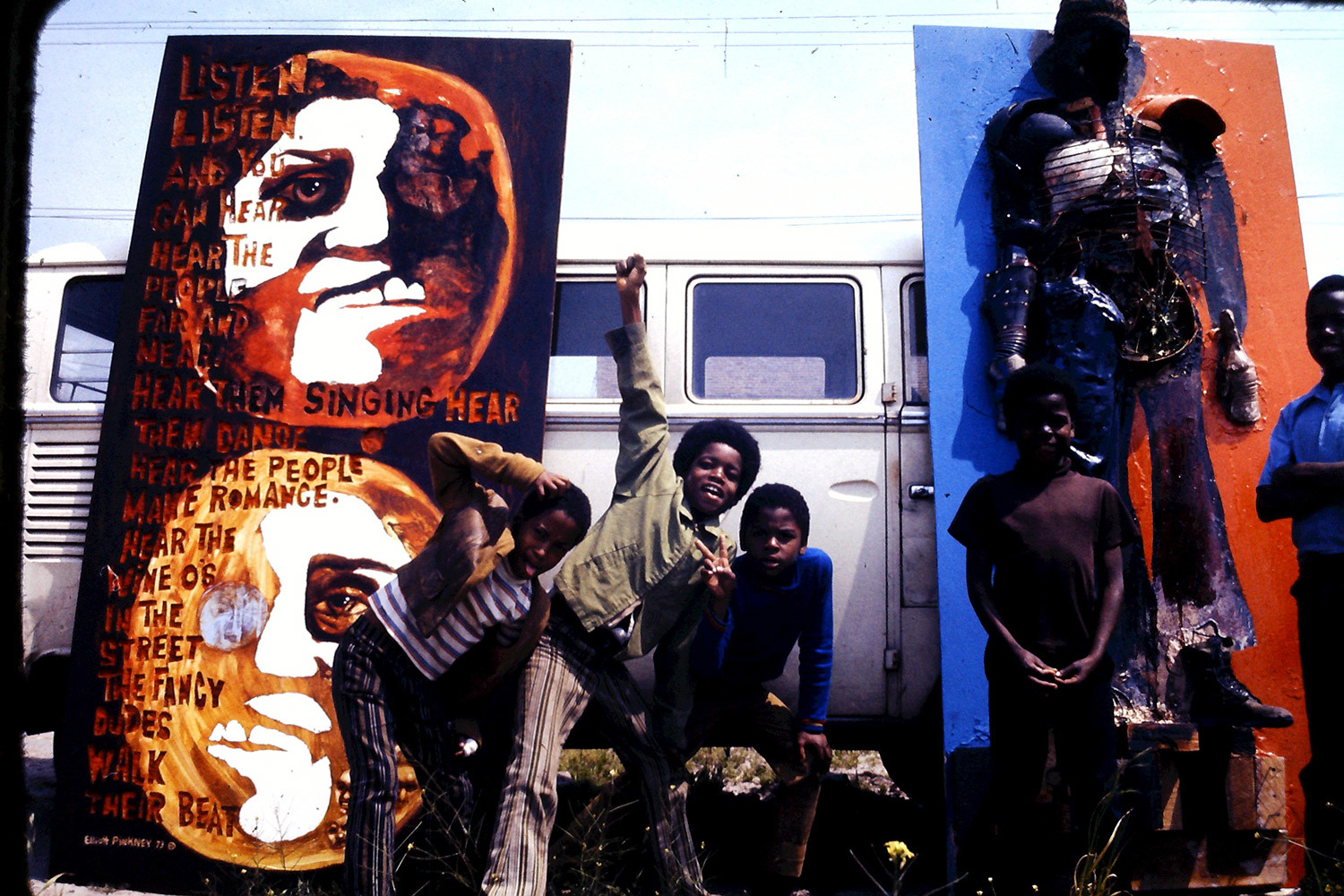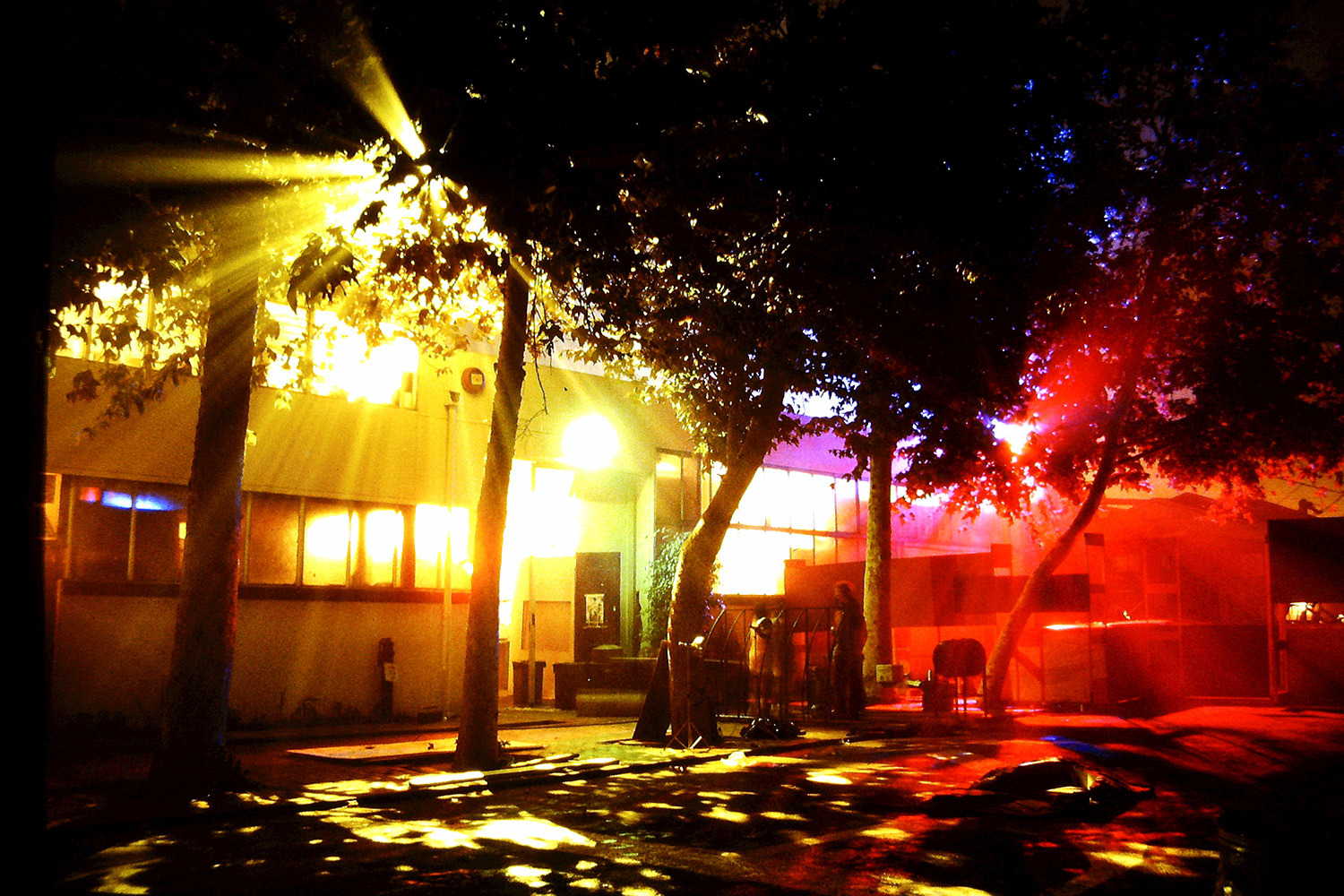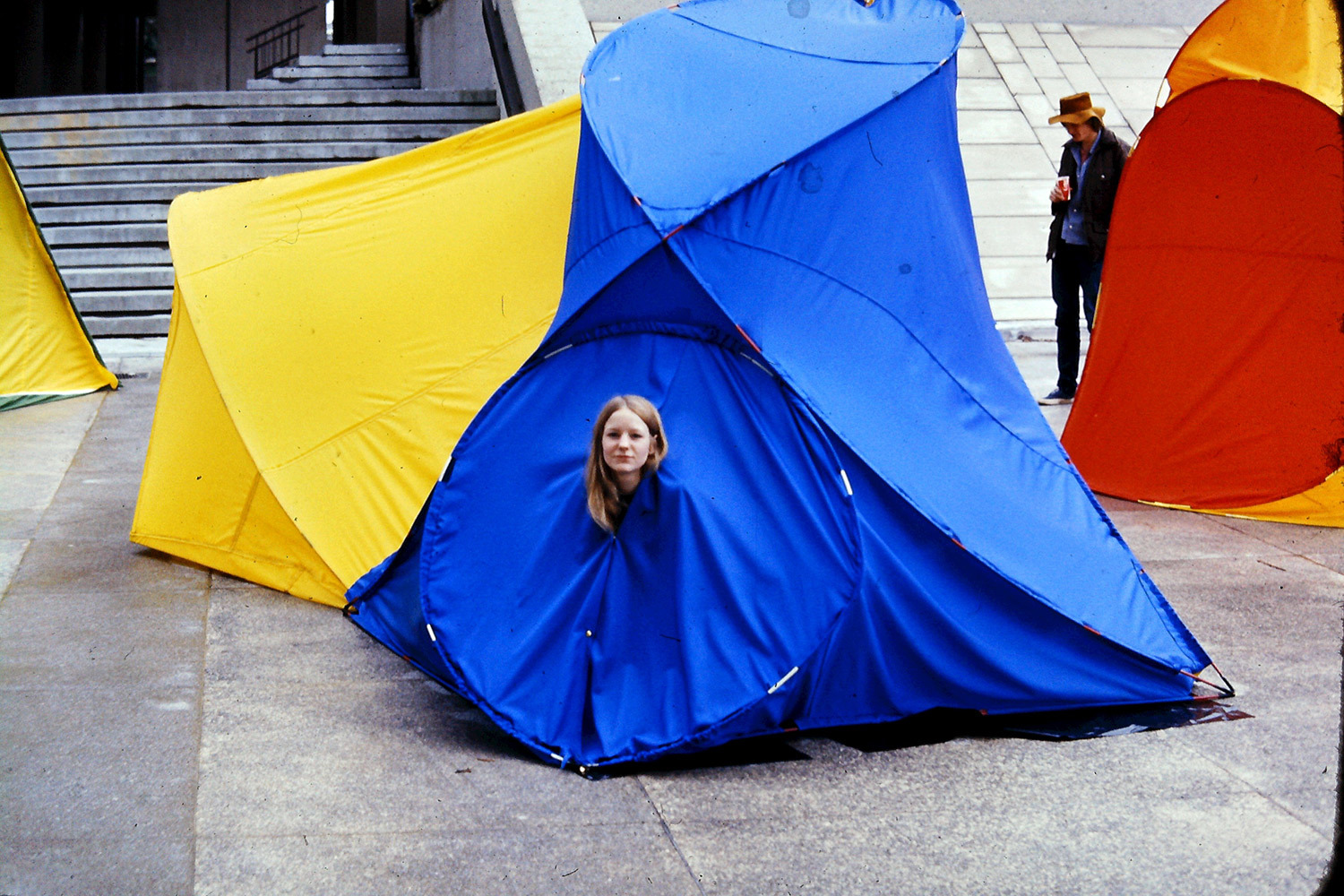How SCI-Arc Began, a Moment in History by Michael Rotondi
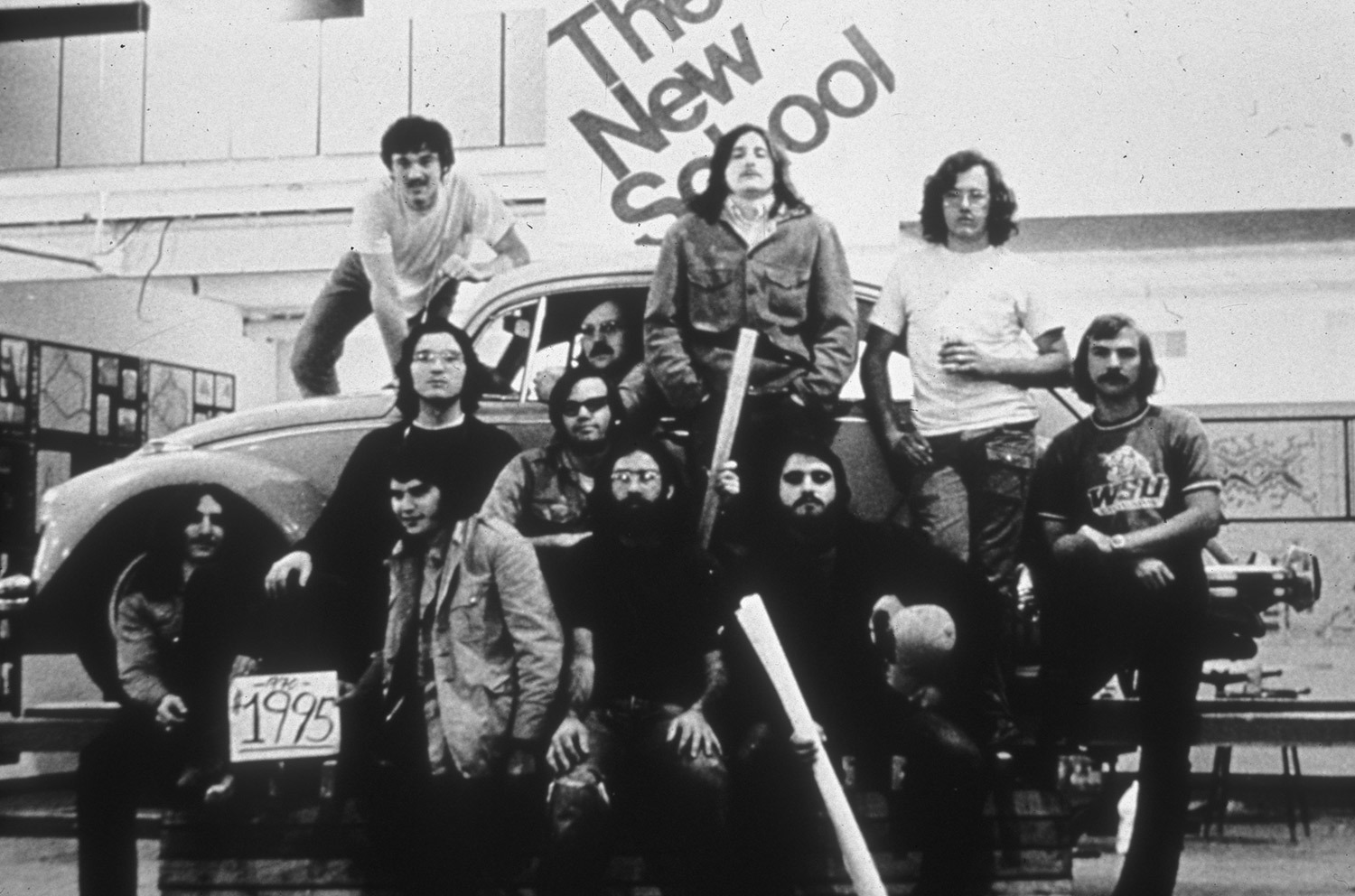
By Michael Rotondi (B.Arch ’75, former SCI-Arc Director)
Why don’t we start our own school?
Did anyone actually say it? Was it a voice we heard in our heads? The thought took us beyond the frustration and anger we felt at our misfortune. The president of Cal Poly Pomona University had removed Ray Kappe as Chair of the School of Architecture—a program Ray had founded three years earlier, in 1969. We were some twenty to twenty-five students whose lives were being wrenched around without any warning by administrators obeying injunctions that American universities in the late sixties sought to enforce. We were meeting twice a week in the evenings, discussing angry strategies of revenge. At least another hundred and twenty-five students shared our concerns.
Why don’t we start our own school?
A silence fell over us. A moment before everyone had been talking in a composite of voices full of frustration and urgency. The silence was empty and calming. Suddenly a path had opened to a future that beckoned. It was May, 1972 and SCI-Arc was born.
Under Kappe’s direction, the School of Architecture at Cal Poly Pomona had been young and adventurous. It experimented with curricular and avant-garde approaches to architecture, such as working on projects at scale and full size. It was socially and environmentally aware. A number of us had transferred there, attracted by things we heard and things we had seen. Ray had assembled a young and dynamic faculty with many points of view. All of them seemed to have equal status. We saw no antagonism between them.
The place was a laboratory, a human petri dish. Students and faculty worked long and productive hours exploring a wide range of ideas and the strategies to implement them. We worked like kids experimenting in the garage or backyard, taking risks without fear of failure. Our process was defined as trial and error. If we hit a dead end, we turned back and went in another direction.
For the first time, we had discovered a life for ourselves. There was no other place we wanted to be. Without realizing it, we were already on a trajectory that was preparing us for the high adventure of creating our own world. We would no longer waste our zeal on trying to change the minds of people who had a different worldview. We would now spend 100% of our time doing what we really needed to do: construct our own school, “the New School.” Of the many lessons we learned at this nexus, one of the most important was how anger could be transformed into joy.
1972 was a good year for us, after the darkest period of our young lives, the sixties. Our own revolution was just beginning and we were optimistic about the future, unafraid of the challenges we faced. We didn’t know how difficult they would prove to be. We were going to be responsible for our own lives. Each day, we could decide what we wanted to do. We said our comfort level was proportional to our uncertainty. Years later we would reverse our opinion on this. The most significant change for all of us was that we felt empowered to make our own world without having to conform to a preexisting one.
The Formative Sixties
In 1963, the world we had known had changed forever. We had seen President John Kennedy assassinated, the image of his skull shattering was shown on television over and over again, as if the reality of it might be erased the next time. We were in shock. The next phase had just begun, without warning.
In 1968 a series of violent tragedies unfurled:
The Reverend Martin Luther King was assassinated.
University students rioted in Europe and America.
The Vietnam War was building.
Students at Kent State University were killed by police for demonstrating against the War.
The Democratic national convention was the scene for riots and police brutality.
JFK’s brother, Robert Kennedy, a presidential candidate, was assassinated.
Marcel Duchamp died.
John Steinbeck died.
Thomas Merton died in Bangkok on Dec 10, the day he had entered the abbey at Gethsemani 27 years before.
Richard Nixon was elected president by the narrowest margin in 100 years.
The conflict between generations had grown exponentially in a decade, and it had hit the streets. My generation came of age in the sixties, as the world we were to inherit fell apart in every way, at all levels, as far as we could see. A new era was beginning but we could not project its future. The world was more than just evolving. We thought of evolution as gradual, sequential and consistent. What we were witnessing was a radical shift. It was a non sequitur as far as we were concerned. We had not been taught to deal with this much change and uncertainty and were unprepared for the upheavals we were experiencing. This was spontaneous combustion or a fire ignited by lightning. It was much bigger than us. The loss of a sense of control was staggering.
Our rights of passage had been brutal and frightening. Yet the more we talked, the more we began to see the wonder that lies within. Maybe life’s mysteries were being revealed by this inversion and, if we remained steadfast and non judgmental, we might discover something new about the world and ourselves. If the world was unpredictable, we had to find new things to value and new ways to be. Bob Dylan sang for us, “the times they are a’changin.”
In 1969, we knew a moment of optimism as we looked to the sky. On July 21, 1969, Neil Armstrong was the first human to step on the moon and Apollo 11 then returned safely to earth. The My Lai massacre in Vietnam brought us down hard.
“Do joy and pain always come in pairs?” we asked one another.
“The good and the bad, it seemed, are not in opposition, they are two aspects of one thing,” Ray told us.
In 1971, the Cal Poly Pomona architecture students and faculty started a velvet revolution.
In 1972, fifty students and faculty left Cal Poly to start their own school. Our motivation was intense. We spent one half of the summer looking for a building, finding a 20,000 sf warehouse at 1800 Berkeley Street, in Santa Monica, and the other half turning it into a laboratory for our work. In one year the community was to grow to a hundred.
In 1972, Richard Nixon was re-elected by a landslide, as the events of Watergate were beginning to unfold.
Belief and disbelief seemed to come in equal doses. Life was, apparently, a zero sum game. We accepted it without complaining. After all we were on an adventure and there were always hardships. Life was a pilgrimage.
Life at “The New School”
Potluck dinners brought us together over food, all-school meetings brought us together over issues, presenting our projects brought us together over ideas, and work parties to improve our building brought us together over construction. We seemed to spend as much time together as we did alone, constantly trying to understand our roles and responsibilities to others and ourselves.
At first, SCI-Arc avoided conventional institutional structures. There were no “professors,” just students with various interests. There were no classes, no curriculum, no central administration, no assigned spaces. We set up our own place to work. Each one of us would decide what we wanted to do, based on our own curiosities, as long as we contributed to the general debate which was as much social as architectural. The main rule was that we had to participate in the ‘family life’ of the school.
We negotiated everything. The rules of engagement were being invented from moment to moment, and if they worked we remembered them. If not, we modified them and moved on. Things were open and fluid. Confusion led to conflict, which led to creative dialogue and action. We accepted all of this without hesitation. We thrived on it. Later we would realize the great advantages of being young and inexperienced. We worked all of the time. We all grew close. There was nothing else we wanted to do and no other place we wanted to be.
The biggest challenges were twofold: knowing how to take full responsibility for our own lives, and how to be an active part of a community that was simultaneously defining itself. Change was constant and continuous. Previously, parents and teachers had done most of the work for us. We realized that responsibility required experience. We re-read John Dewey, which had a huge influence on the concept and structure of teaching and learning practices at the school from that time to the present.
Theoretical Aspects of Our Educational Practice
The school, in all its confusion and good intentions was our first great teacher. Science defines this type of free-for-all as “self-organizing.” The relationships between each of us and the environment that was emerging was mutually defining.
It was also autocatalytic. Everyone was experiencing the same feelings of confusion, hope, fear, joy, anger, elation, jealousy, respect, fatigue, and excitement. We were all on the same life boat. We developed affinities for each other’s differences, knowing that our diversity made us a more complex and stronger organism. We depended on one another. It was not only a necessity, we came to the awareness that we wanted it that way. We had become a tribe.
What we knew least about was the history and theories of constructing an alternative education practice, which is what we were doing. After four months of discussions, and debates that came out of the big question we asked in so many ways “What is SCI-Arc, and what is our role in this community?” I decided that one way to answer the question was to take it on as a creative design problem. I would try to design the school we were trying to manifest. The next question I was compelled to ask was “who else had worked on the problem of alternative education?”
As I did my research, I began to see familiar patterns and recurring themes, three in particular. First, there was the relationship of freedom to structure. We had convinced ourselves that they were in conflict. We were wrong. They were two aspect of one thing: life. The issue was one of balance. This is always the issue.
Second, there was the nature of change: types of change, rates of change, and frequency of change.
Third, there was the relationship of part to whole (one to many). Each part had to have an imprint of the purpose of the whole system, an internal logic that would set its performance criteria and establish limits as well as the discretion to assess and respond to unexpected new conditions. Everything at all scales is interconnected and interdependent. I re-read The Federalist Papers, in which James Madison makes a clear and convincing argument about the necessity for giving equal weight to individual rights and communal responsibility. This is what all of us in the SCI-Arc community had to come to terms with.
We had to see the whole thing
We had to think systemically
We had to see the value of interdependence.

The Sequoya Educational Research Project
I was now clear about what my final project would be. I would design an alternative school that was at once a social and educational experiment, housed in a “machine” for teaching and learning. I would explore the architectural equivalent of these thoughts. I called it “the Sequoya Educational Research Project.
The program was an alternative high school for the arts, situated on a pastoral mesa overlooking the Pacific Ocean north of Los Angeles. The students and faculty living and working on this large site could be part-time nomads. This type of site offered wonderful places to spend time, and its geographic conditions with several microclimates allowed for a variety of design responses.
Teaching and Learning
It would have an industrial aesthetic. I thought of it as a “machine for learning.” The more I worked on this, the less confused I became. This discovery stayed at the heart of my architectural practice.
The work brought me together with three others, one who would soon become a professional creative partner, two who would become lifelong friends. The four of us came together on a regular basis to discuss, argue, and critique the project. It was completed by the end of the first year of SCI-Arc, presented before the entire school at the very end of one-week-long marathon of presentations. Pumped by adrenalin, my rapid non-stop talking went on for an hour. Discussion continued for another hour.
I now realize that this was the first draft of a vision that would evolve over the next fifteen years and unfold at full scale, in real time when I was elected to be Director of the Institute in 1987. In 1974, the project was submitted to Progressive Architecture Awards Program. The divide between modernism and post-modernism was becoming a more public confrontation. The jury divided and contentious, granted an award.
The year SCI-Arc was born
we were enthusiastic about
starting a new school.
We were motivated by
the idea that this might be possible
We knew that it would
be a creative process
in which we would learn about ourselves and each other.
We experienced fear and conflict
but sensed that this was a positive thing,
an inherent part of the process.
Most importantly, we learned what it meant
to be a collection of individuals
coalescing into a community,
aware of the uncertainties of change and the
belief that it would make our lives and, in turn,
the world better.
I've thought and said,
SCI-Arc is the story
Lord of the Flies
with a good ending.
Change and uncertainty were our new medium
We were living it.
They were not conceptual but real.
The school was the
GRAND EXPERIMENT.
It was THE PROJECT.
Our words and ideas
were tested almost
immediately, at every moment.
Everyday our survival was contingent on our ability
to be open to possibilities.
Why were we doing this?
What would we achieve?
What would our payback be?
What were our guarantees for success?
We did not know,
but one thing we knew:
IT WAS THE RIGHT THING TO DO.
It was a time of:
1. Boundless optimism
2. Extreme motivation
3. Intense conflict
4. Great learning
and
5. Immense fun
How could this be?
How could our comfort level be equal to the uncertainty?
What gave us the strength to move forward?
Our faith in the
COSMIC MIND.
The experience of renewal and rebirth
was almost as familiar as our own heartbeat.
We were experiencing the ACT OF CREATION itself.
SCI-Arc grew and learned.
Like any organism,
its evolution was influenced by its parts--
all of the individuals that made it up.
People were the MOLECULES and
SCI-Arc was the BODY.
It finally stood erect
and took its place
in the world
and spoke to anyone
who would listen.
It was a place of freedom,
a place where people could invent a LIFE
that was uniquely theirs.
It taught us, by example,
that anything imaginable was possible.
The fact that it existed, was evidence of what is possible with FAITH.
SCI-Arc not only talked about change,
it has lived it. Walked the talk.
And in the spirit of its first moment of life,
it has always been willing to engage the world as it is,
in an unconditional relationship.
SCI-Arc is a complete invention,
constructed full size, in real time.
The ultimate collective thesis project
expressing the ideas of people with strong wills,
who believe it is their mission to change the world
in constructive ways.
SCI–Arc encouraged us to live the life
we want to create for others.
SCI-Arc was the first place we could imagine the world
as we wanted it to be and would try to make it.
We were convinced that the best way to test an idea was to build it as close as we could to the ideal.
We knew this was as close as we would ever get to the ideal.
Knowing what was possible
was the motivation to do it again and again and again and again,
until it was time to go.
SCI-Arc is both a particle and a wave.
finis

